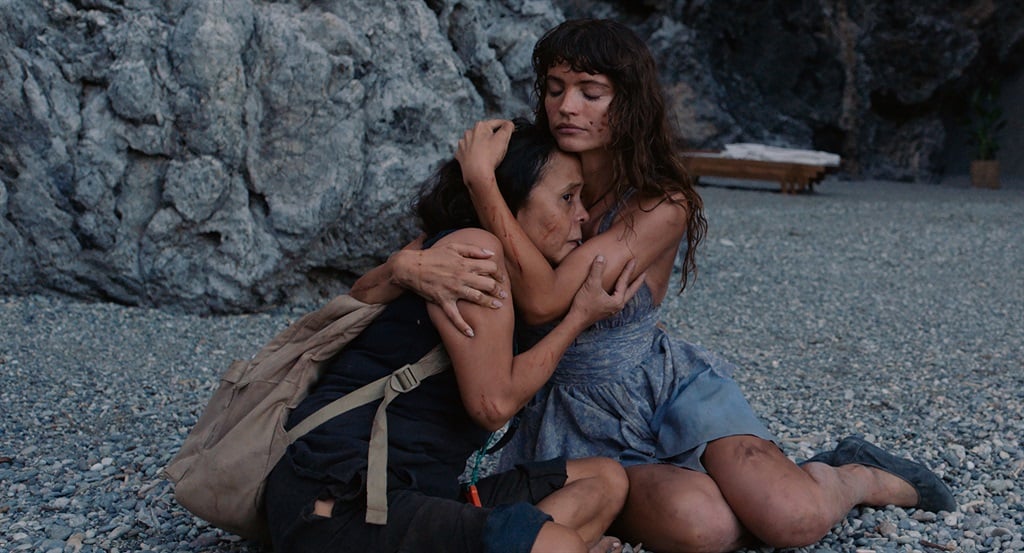Short Film Spotlight: An A Peel for Justice by Jeff Aquino
Jeff Aquino’s film “Viral” placed second in 2020’s Incluvie Film Festival fest, he’s back again with his film "An A Peel for Justice".
Incluvie Foundation Gala - Learn More


Regardless of how you interpret Ruben Östlund’s Triangle of Sadness, one thing is certain: it is wildly entertaining. It does touch on its thesis of socialism versus capitalism with flagrancy, but this film flies by in a series of flashes. Each installment is more gripping than the last, and the details of the story are built upon, layer by layer, ensuring they’ve left the most profound impact by the time the ending comes around. I truly believe that the less you know about the plot going into this film, the more fun it will be, so I’ll forego a synopsis.
The most substantial aspect of the film is its structure. The narrative is divided into three chapters which allow for the different themes, or actualizations of those themes, to emerge in entirely different settings. A perfect example is the debate on gender roles within relationships. Östlund plays with these ideas in fascinating ways in the first chapter of the film compared to the third. The leading couple, Carl and Yaya (Harris Dickinson and Charlbi Dean), are at the forefront of displaying how each conversation around wealth, privilege, class, and gender evolves. We can observe how their dynamics and values change under the different experiences of each setting, and how power changes hands depending on what currency is the most valuable at any given time.

The chapters achieve fluidity from one circumstance to another and cultivate unique spaces in which Östlund’s storytelling can meander while still building on the foundation of larger points. Every interaction seems like it could be isolated into its own little short film and still make sense but they are bound together by a strong cognitive thread to compose Triangle of Sadness as a complete vision. The film opens, for instance, with a series of interviews taking place at a modeling audition. This sequence holds incredible thematic significance, but we never see this setting or the majority of its cast members again. It is still one of the more memorable scenes and the humor that is integral to this film really shines here.

This unique format also motivates a revolving door of interesting characters while still giving each person the time and attention they need to showcase what they add to the story. This is how Östlund successfully delivers a story about class structure being completely turned on its head within the same set of characters. While it’s true that Triangle of Sadness might not be the most intuitive criticism of the 1%, it does cut through the noise with its whimsical assembly of scenes and lively portrayal of a wide array of characters.
It took Ruben Östlund roughly 6 months to cast ‘Triangle of Sadness’ and his search for the perfect ensemble took him all around the world. What Östlund was aiming to accomplish with this cast was to give the audience a more pure experience of his material by casting mostly unknown actors. Woody Harrelson lends his signature dry wit to the cast and former model Charlbi Dean brings her real-world experience of the fashion realm to her role, but the director specifically sought out “new faces” to bring more originality to his film. The physical aspects of the seas-sickness scenes were brought to life by theatre actresses among the diners who know how to give a pronounced performance. Zlatko Burić had the idea to play the Russian fertilizer magnate as a likable, friendly guy when he was written to be intimidating and mean. Östlund says that these unexpected adaptations of his characters by actors who are unrecognizable to the audience gave his film an “energy that [he] couldn’t predict”. This choice was a poignant creative decision that was made so the audience would not be taken out of his story world by the awareness that a well-known actor was performing a part that was written for them. The ease that the actors have with one another can largely be attributed to Östlund’s unorthodox audition process that takes the pressure off the performers and allows for a lot of improvisation that influences the future of the film.

Breakout star Charlbi Dean’s Yaya is praised for acting as the film’s “dramatic engine”. She deserves every morsel of credit that she is given, and it is heartbreaking to think how brightly her star would have shone had she not passed away this August.
The entire third act is a testament to Dolly De Leon’s incredible performance as Abigail, a member of the ship’s cleaning crew who assumes a new, powerful role as the leader of the group. De Leon is so comfortable in this authoritative space and commands the screen just as effortlessly as she commands the respect of her former shipmates.
The cast of Triangle of Sadness acts as a microcosm of capitalist entrapment and human nature. Different values are brought in and out of focus in unexpected ways as the narrative progresses, such as the idea of influence, equality, and different currencies within communities. Östlund plays with the idea of nurture versus nature, and how cruel anyone can be once they’ve been given a taste of absolute power. His most poignant indicator as to how this film ought to be perceived is through the lens of how imperfect any character can be once we get close to them, and how any one person’s success can be quite boring. It is their collective misguided attempts and failures that make an ensemble complex and interesting. The heart of this film is meaty and character-driven, and this skilled group of creatives provides us with personalities we love to hate.
Related lists created by the same author
Jeff Aquino’s film “Viral” placed second in 2020’s Incluvie Film Festival fest, he’s back again with his film "An A Peel for Justice".
Related movie/TV/List/Topic
This theatrical sequel based on the PAW Patrol series features voice actors of color in this action-packed adventure.